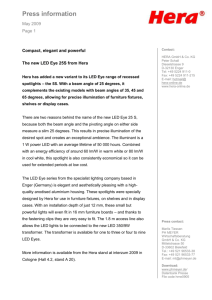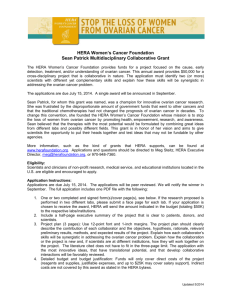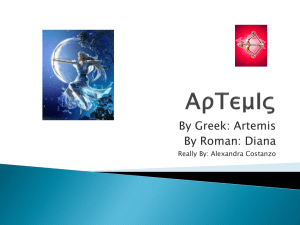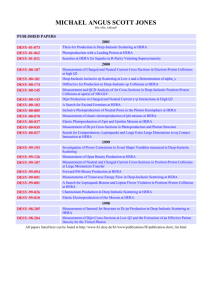background information
advertisement
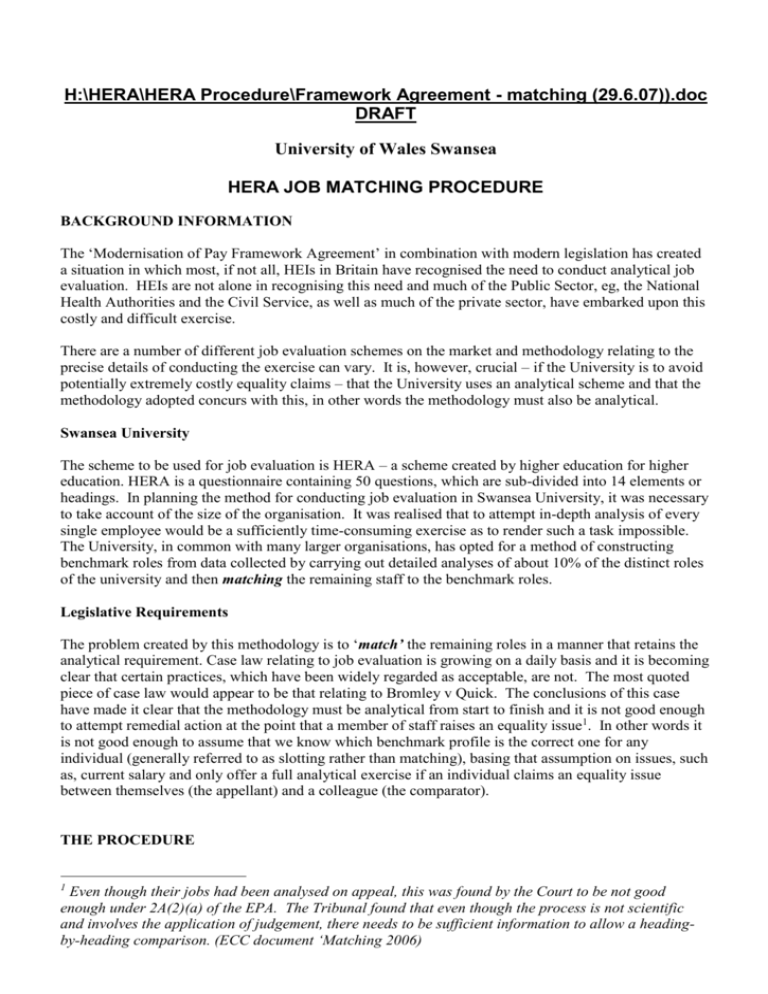
H:\HERA\HERA Procedure\Framework Agreement - matching (29.6.07)).doc DRAFT University of Wales Swansea HERA JOB MATCHING PROCEDURE BACKGROUND INFORMATION The ‘Modernisation of Pay Framework Agreement’ in combination with modern legislation has created a situation in which most, if not all, HEIs in Britain have recognised the need to conduct analytical job evaluation. HEIs are not alone in recognising this need and much of the Public Sector, eg, the National Health Authorities and the Civil Service, as well as much of the private sector, have embarked upon this costly and difficult exercise. There are a number of different job evaluation schemes on the market and methodology relating to the precise details of conducting the exercise can vary. It is, however, crucial – if the University is to avoid potentially extremely costly equality claims – that the University uses an analytical scheme and that the methodology adopted concurs with this, in other words the methodology must also be analytical. Swansea University The scheme to be used for job evaluation is HERA – a scheme created by higher education for higher education. HERA is a questionnaire containing 50 questions, which are sub-divided into 14 elements or headings. In planning the method for conducting job evaluation in Swansea University, it was necessary to take account of the size of the organisation. It was realised that to attempt in-depth analysis of every single employee would be a sufficiently time-consuming exercise as to render such a task impossible. The University, in common with many larger organisations, has opted for a method of constructing benchmark roles from data collected by carrying out detailed analyses of about 10% of the distinct roles of the university and then matching the remaining staff to the benchmark roles. Legislative Requirements The problem created by this methodology is to ‘match’ the remaining roles in a manner that retains the analytical requirement. Case law relating to job evaluation is growing on a daily basis and it is becoming clear that certain practices, which have been widely regarded as acceptable, are not. The most quoted piece of case law would appear to be that relating to Bromley v Quick. The conclusions of this case have made it clear that the methodology must be analytical from start to finish and it is not good enough to attempt remedial action at the point that a member of staff raises an equality issue1. In other words it is not good enough to assume that we know which benchmark profile is the correct one for any individual (generally referred to as slotting rather than matching), basing that assumption on issues, such as, current salary and only offer a full analytical exercise if an individual claims an equality issue between themselves (the appellant) and a colleague (the comparator). THE PROCEDURE 1 Even though their jobs had been analysed on appeal, this was found by the Court to be not good enough under 2A(2)(a) of the EPA. The Tribunal found that even though the process is not scientific and involves the application of judgement, there needs to be sufficient information to allow a headingby-heading comparison. (ECC document ‘Matching 2006) The agreed procedure for conducting an analytical job evaluation within Swansea University is as follows: 1 Data Gathering a b c d 2 Distinct roles will be identified. 10% of the distinct roles will be analysed in detail by completion of the HERA questionnaire. Benchmark profiles will be compiled based on the detailed analysis. A grading structure will be constructed based on the detailed analysis. Matching (see appendix i) a b c 3 2 Job profiles will be created for all jobs, all job holders will be given the opportunity to participate in this process. Job Profiles will be matched to benchmark profiles Matching reviews will take place. Appeals (see appendix ii) a Appeals – all staff will have access to the Appeals Procedure. A role encompasses a number of jobs, eg, the jobs of ‘director of estates’ and ‘director of finance’ may both correspond with the role of ‘director’. Line managers will be asked to identify the different roles which they believe exist within their areas of responsibility. These roles will be known as the ‘distinct roles’. 2 Appendix i Matching All members of staff, who have not participated in the data gathering exercise, that is they have not completed a HERA questionnaire, will be asked to complete a job profile. This is more like a job description, but based upon the HERA questionnaire. The job profile will be counter signed by a line manager. For some jobs, eg cleaners, gardeners and academic staff, it will be possible for the HERA team to create generic profiles and send it to individuals for them to make amendments and/or additions. For many jobs it will be necessary for individuals to complete the job profile themselves. Written notes of guidance will accompany the job profiles. Job profiles will then be matched to benchmark profiles. Benchmark profiles are attached to a salary grade, so this process indirectly leads to the placing of individuals on salary grades. o In the case of a job profile which does not match any of the benchmark profiles, a full analysis will be carried out. The Steering Group will receive information summarising the outcome of the matching exercise. Any areas where serious anomalies are identified will be re-checked by the HERA team. Heads of Schools/Departments will receive information summarising the outcome of the match. Any areas where serious anomalies are identified will be re-checked by the HERA team. Members of staff will be notified of the outcome of the match and will receive information about their grade, the benchmark role profile to which they have been matched and their salary. They will also be informed of the review and appeals procedures. Matching Review – an opportunity to ensure accurate and up-to-date data is used and that the matching process is rigorous. The matching review will: o Take place prior to implementation o Be strictly limited to those who have been red circled or incurred 3detriment. o Take place in response to a request from an individual or a Head of School. All such requests must be accompanied by full details as to why the allocated benchmark profile is not considered to be appropriate. Matching Review Panel The matching review panel will consist only of trained role analysts, who have played an active part in the analysis and matching stages of the job evaluation exercise. The panel must consist of at least two role analysts. Trade Union representatives may participate in these panels. o The panel will decide which benchmark role profile most appropriately matches the job profile. The outcome will be notified to the member of staff and the Head of School / Department. NB There is a potential difficulty with regard to individuals who are requested to complete job profile forms and fail to do so. In such cases responsibility for returning a form, giving adequate details of the job, will fall to the Head of School/Director. 3 Anyone who is placed on a salary grade that has a lower top limit than the top limit of their current salary grade. Appendix ii Appeal Appeals will take place following implementation. A member of staff dissatisfied with the profile to which they have been matched may put a case to forward for appeal. Priority will be given to those who have been red circled or incurred detriment. The appellant should set out reasons why the allocated benchmark role profile is not appropriate. They should indicate which, if any other benchmark role profile is more appropriate for their role giving evidence; OR they should set out clearly why no profile is relevant to their role. The HERA project manager will reassess the case to ensure that the original match was correct. The Appeal Panel will consider the evidence and the case put forward by the appellant. Anyone sitting on a appeal panel must have attended equality and HERA training. Wherever possible the structure of the panel should reflect the diversity of the University. The panel will consist of: o Head of School, Senior Administrator, Senior Manager or Senior Academic who has received basic HERA training. o Two trade union representatives, who have received basic HERA training; one from the TU that represents the staff group of the appellant and one from a different staff group. o The Chair of the Steering Group or a Steering Group member nominated by the Chair. o *A Personnel Officer o *A member of the HERA team No–one involved previously or with an interest in the case should be a voting Appeal Panel member. A HERA role analyst will be in attendance and the panel will receive a report from the role analyst on each individual appeal, this will include detailed HERA/role matching-based reasons as to why the appeal should be supported or rejected. A Personnel Officer will manage the process and will be in attendance. The Appeal Panel may decide: o that the benchmark role profile allocated by the HERA team is correct; o that another benchmark role profile is more appropriate; o that the role should be re-examined by HERA analyst, which may involve a full role analysis, with a view to: creating an alternative benchmark profile; clarifying issues that the Panel is finding difficult to analyse. The outcome will be notified to the member of staff and the Head of School/Department. *These will be non-voting members.
